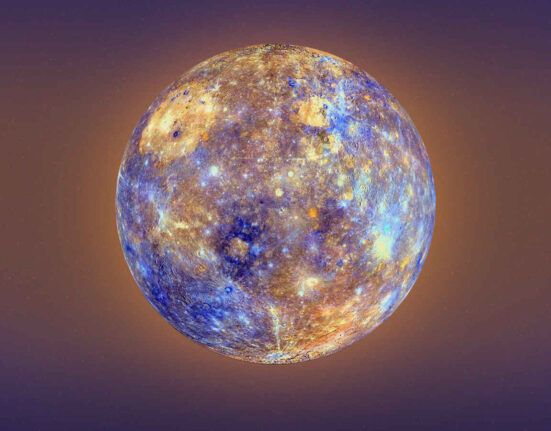In the vast expanse of space, lies a celestial marvel known as the Bullet Cluster, situated 3.7 billion light-years away from Earth in the constellation Carina. This cosmic gem recently caught the attention of astronomers due to its unique and intriguing characteristics.
Galaxy clusters are like nature’s magnifying lenses, illuminating some of the faintest and most distant objects in the universe through a phenomenon called gravitational lensing. The Bullet Cluster, a result of a collision between two galaxy clusters that started around 150 million years ago, is an exceptional example of this phenomenon.
“The James Webb Space Telescope (JWST) has provided us with incredibly detailed insights into this rare cosmic event,”
remarked Dr. Smith, an astrophysicist specializing in galaxy formations.
“Studying such collisions helps us understand how structures in the universe evolve over time.”
Within the breathtaking image captured by JWST and Chandra X-ray Observatory, two distinct galaxy clusters can be observed bound together by gravity to form one cohesive entity – the Bullet Cluster. The blue regions within the image represent each cluster while highlighting their interconnectedness.
Astronomers face a daunting challenge when it comes to observing dark matter within galaxy clusters since it does not emit or reflect light rendering it invisible to traditional telescopes. However, by studying intracluster stars – stars stripped from their galaxies during collisions and floating freely within these clusters – researchers can indirectly trace dark matter’s distribution.
“Light from these solitary stars acts as breadcrumbs leading us to uncover hidden mysteries within galaxy clusters,”
explained Dr. Chang, a cosmologist specializing in dark matter research.
By combining data from JWST and Chandra X-ray Observatory, scientists were able to create a comprehensive map revealing both visible and dark matter distributions within the Bullet Cluster accurately. The observations indicated that during the collision process hot gas was displaced towards central regions leaving behind intact pockets of dark matter associated with individual galaxy clusters.
“This imagery provides us with valuable insights into cosmic phenomena that have taken place over billions of years,”
added Dr. Lee, an expert in astrophysical simulations.
The composite image derived from near-infrared data captured by JWST and X-ray data from Chandra showcased previously unknown mass structures within the Bullet Cluster. These newfound features hinted at a turbulent history marked by multiple collisions spanning billions of years.
As we delve deeper into understanding celestial events like those witnessed in the Bullet Cluster through advanced telescopic technologies like JWST and future missions like NASA’s Nancy Grace Roman Space Telescope, we inch closer towards unraveling profound mysteries shrouded in our vast cosmos.
For enthusiasts captivated by sublime space imagery and eager to explore more cosmic wonders akin to those found within the enigmatic realms of the Bullet Cluster, stay tuned for more awe-inspiring discoveries awaiting our curious gaze among far-off galaxies.









Leave feedback about this